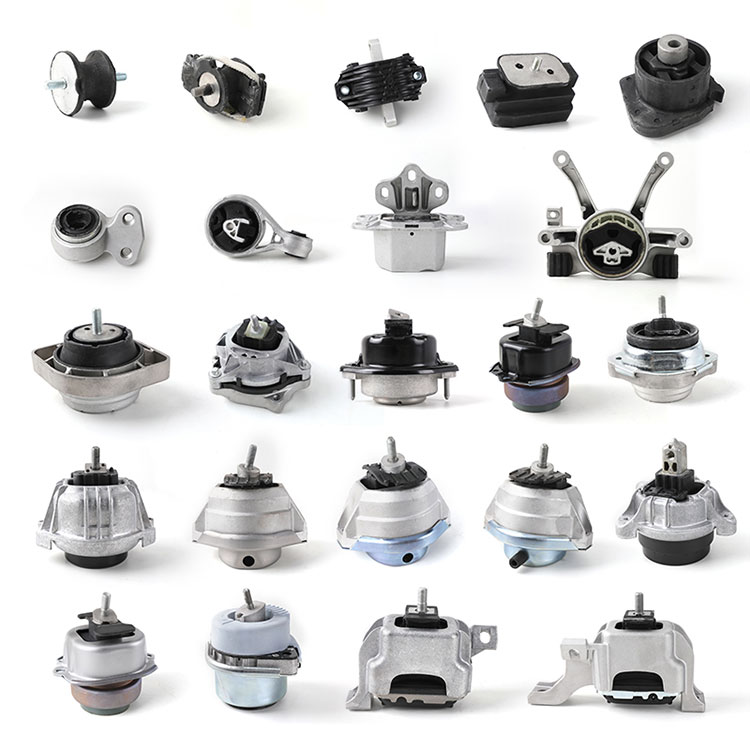Key Components of Auto Engine Systems
2024-06-12
Auto engine systems are integral to the functionality and performance of a vehicle. They comprise various subsystems that work together to convert fuel into mechanical energy, enabling the car to move. Here's an overview of the primary components and functions of auto engine systems:
Key Components of Auto Engine Systems
1. Engine Block and Cylinders:
- Engine Block: The foundation of the engine, usually made of cast iron or aluminum, containing cylinders where the pistons move.
- Cylinders: Hollow spaces within the block where fuel combustion occurs. The number of cylinders can vary (e.g., 4, 6, 8), affecting power and efficiency.
2. Pistons and Crankshaft:
- Pistons: Move up and down within the cylinders, driven by the combustion of fuel.
- Crankshaft: Converts the up-and-down motion of the pistons into rotational motion to power the vehicle’s wheels.
3. Camshaft and Valvetrain:
- Camshaft: Controls the opening and closing of intake and exhaust valves in sync with the piston movement.
- Valves: Allow air and fuel mixture into the cylinders and exhaust gases out of the cylinders.
4. Fuel System:
- Fuel Tank: Stores the fuel.
- Fuel Pump: Delivers fuel from the tank to the engine.
- Fuel Injectors/Carburetors: Inject fuel into the engine’s cylinders (modern engines use fuel injectors, while older engines may use carburetors).
5. Ignition System:
- Spark Plugs: Ignite the air-fuel mixture within the cylinders.
- Ignition Coil: Converts the battery’s voltage to a higher voltage to create a spark in the spark plugs.
- Distributor: Directs the high voltage from the ignition coil to the correct spark plug at the right time.
6. Exhaust System:
- Exhaust Manifold: Collects exhaust gases from the cylinders and directs them to the exhaust pipe.
- Catalytic Converter: Reduces harmful emissions before they exit the tailpipe.
- Muffler: Reduces the noise produced by the exhaust gases.
7. Cooling System:
- Radiator: Cools the engine by dissipating heat.
- Water Pump: Circulates coolant through the engine and radiator.
- Thermostat: Regulates the engine’s temperature by controlling coolant flow.
8. Lubrication System:
- Oil Pump: Circulates oil to lubricate engine components.
- Oil Filter: Removes contaminants from the engine oil.
- Oil Pan: Stores the engine oil.
Functions of Auto Engine Systems
1. Combustion Process:
- The engine converts the chemical energy in fuel into mechanical energy through combustion. This involves the intake of air and fuel, compression of the mixture, ignition, and exhaust.
2. Power Generation:
- The reciprocating motion of the pistons, driven by combustion, is converted into rotational motion by the crankshaft, generating power to move the vehicle.
3. Fuel Management:
- The fuel system ensures an adequate supply of fuel to the engine and regulates the air-fuel mixture for efficient combustion.
4. Ignition Timing:
- The ignition system ensures that the spark plugs ignite the air-fuel mixture at the precise moment for optimal power and efficiency.
5. Emissions Control:
- The exhaust system reduces pollutants emitted from the engine, meeting environmental regulations and improving air quality.
6. Thermal Management:
- The cooling system prevents the engine from overheating by dissipating excess heat and maintaining an optimal operating temperature.
7. Lubrication:
- The lubrication system minimizes friction between moving parts, reducing wear and tear and prolonging the engine’s lifespan.
Advanced Engine Technologies
1. Turbocharging and Supercharging:
- Turbochargers: Use exhaust gases to drive a turbine, forcing more air into the engine for increased power.
- Superchargers: Directly powered by the engine’s crankshaft to force more air into the engine.
2. Direct Injection:
- Injects fuel directly into the combustion chamber for more precise fuel control, improving efficiency and power.
3. Variable Valve Timing (VVT):
- Adjusts the timing of the valve opening and closing to optimize performance and efficiency at different engine speeds.
4. Hybrid and Electric Systems:
- Combine traditional internal combustion engines with electric motors for improved fuel efficiency and reduced emissions.
Maintenance Tips
1. Regular Oil Changes: Keep the lubrication system in good condition to prevent engine wear.
2. Coolant Checks: Ensure the cooling system is functioning properly to avoid overheating.
3. Air Filter Replacement: Maintain proper air flow to the engine for efficient combustion.
4. Spark Plug Inspection: Ensure the ignition system is firing correctly for optimal performance.
5. Timing Belt Replacement: Replace the timing belt as per the manufacturer’s recommendations to avoid engine damage.
Understanding auto engine systems is crucial for maintaining vehicle performance, efficiency, and longevity. Regular maintenance and awareness of advanced technologies can enhance driving experience and reduce long-term costs.



